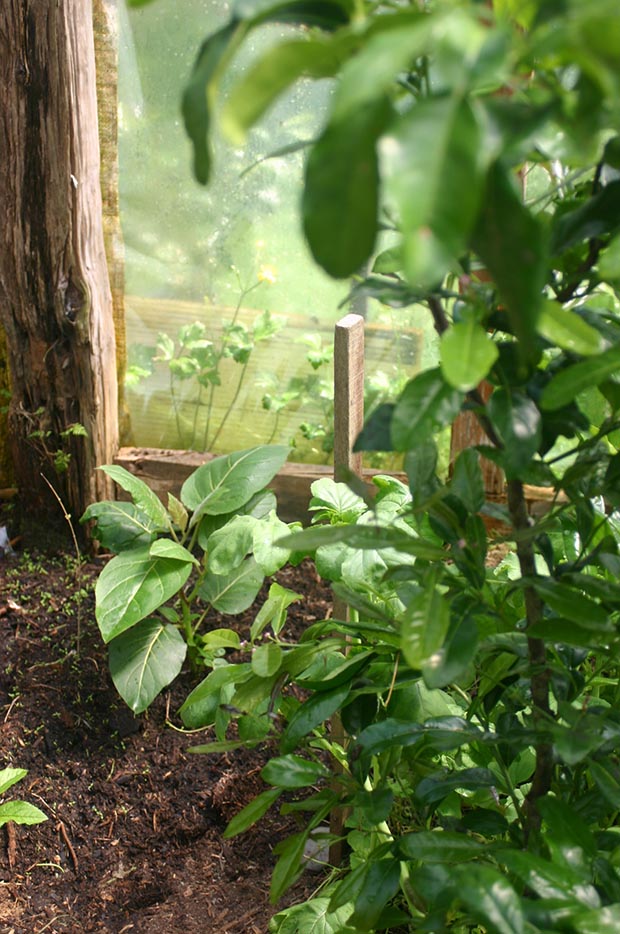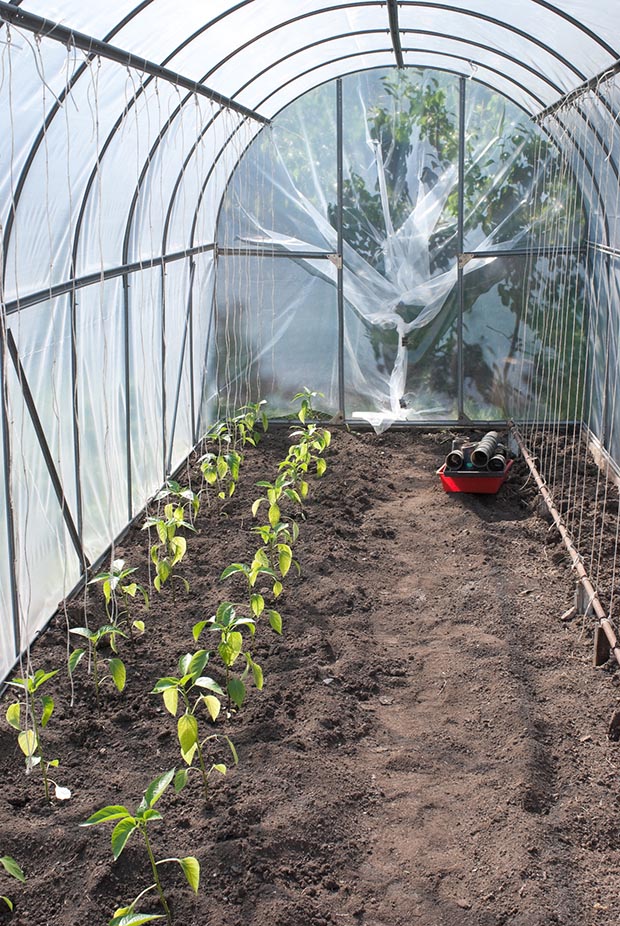5 tips for growing in a tunnel house

For a small investment you can double your food production.
Words: Ben Gaia
Whether home-made or custom-designed, having a large covered area in our climate enables us to extend our range of growing times and species.
Veges can be grown right through the frosty months, providing salads and peas for home use.
Propagating under cover gets your seedlings going weeks ahead of normal, allowing for late spring planting after frosts.

Spring sees the propagating trays fill the floor and every surface as we sprout our vege, flower and tree seeds for the coming season. But best of all, my home-made tunnel house enables me to succeed at growing outrageously tropical plants in our terrible climate.
As the monsoon rains and hail batter away at the farm-grade polythene, I breathe in the delightful floral scent of my satsuma tree in full magnificent bloom. Other citrus normally slaughtered by Westland frosts, like kaffir lime, pomelo grapefruit and Valencia orange, are producing leaves for asian cuisine, and the odd fruit for juice or marmalade.
Summer sees the tomato crop swell and ripen, as the tree fruits also grow and swell. My tamarillo tree died of drought last summer, but its replacement is growing visibly day by day, and will give me a box of tamarilloes next year. Strawberry guavas have been another delicious success story.
My tunnel house measures 9m long x 3m wide x 2.5m high and is made of recycled cattleyard posts of silver pine and eucalypt timber. The framing is rimu 4-by-2 seconds from the days when these were plentiful.
Most of one long wall is open to the rain and cool air flow from the west, but is sheltered with strong shade cloth stretched over the frame.
Having one open wall is a lesson learnt from the Coasters and their moss-drying houses. Free-flowing air is more useful than too much summer heat.

The main walls and roof are reinforced industrial plastic on one wall, and agphane on the roof and the rest of the walls. This rips after about five years due to the sun and wind, and those with big holes need to be replaced. But some panels have lasted much longer – more than 10 years – and I can only guess they are held together by lichen.
The floor is covered with pine chip which deters snails.
The original total cost was $1000 including a builder and it has stood for over 10 years.
TIPS FOR GROWING IN A TUNNEL HOUSE
1. Excess growth must be checked by bonsai-ing fruit trees in large containers, or by vigorous pruning. Tamarilloes and guavas seem to relish being cut to half their height, and will immediately double their yield.
2. Don’t plant big things like figs or bananas or they will try to burst through the roof.n It is important in spring and summer to have an opening so bees can get in to pollinate the tree fruit blossoms.
3. Be wary of letting too many blackbirds or chaffinches in as they will gobble up your precious lettuce, pea and brassica seeds. They will also enlarge existing holes in the plastic to get back out. I moved my two old blueberry bushes into the tunnel house after getting no fruit for years, and they were immediately dripping with gigantic blueberries. Bird-proofing is an absolute must.
4. You will need to irrigate any covered area, especially in summer. The best schemes have permanent pipe and a hefty sprinkler which soaks the whole thing every second or third day on a timer. Timers (or helpful mates) ensure you can go away without worrying. Irregular watering times suit plants better than the same time every day. Trickle and gravity-fed hoses are good for low rainfall areas. Simple hydroponic systems can be designed by the wily Kiwi, and organic liquid feeds made from comfrey, seaweed and so on. A good old hand-held hose squirted from inside the door is brilliant for checking everything gets its share, and visually spotting problems. This can be the least water-wasteful of all, soaking roots effectively.
Love this story? Subscribe now!
 This article first appeared in NZ Lifestyle Block Magazine.
This article first appeared in NZ Lifestyle Block Magazine.

